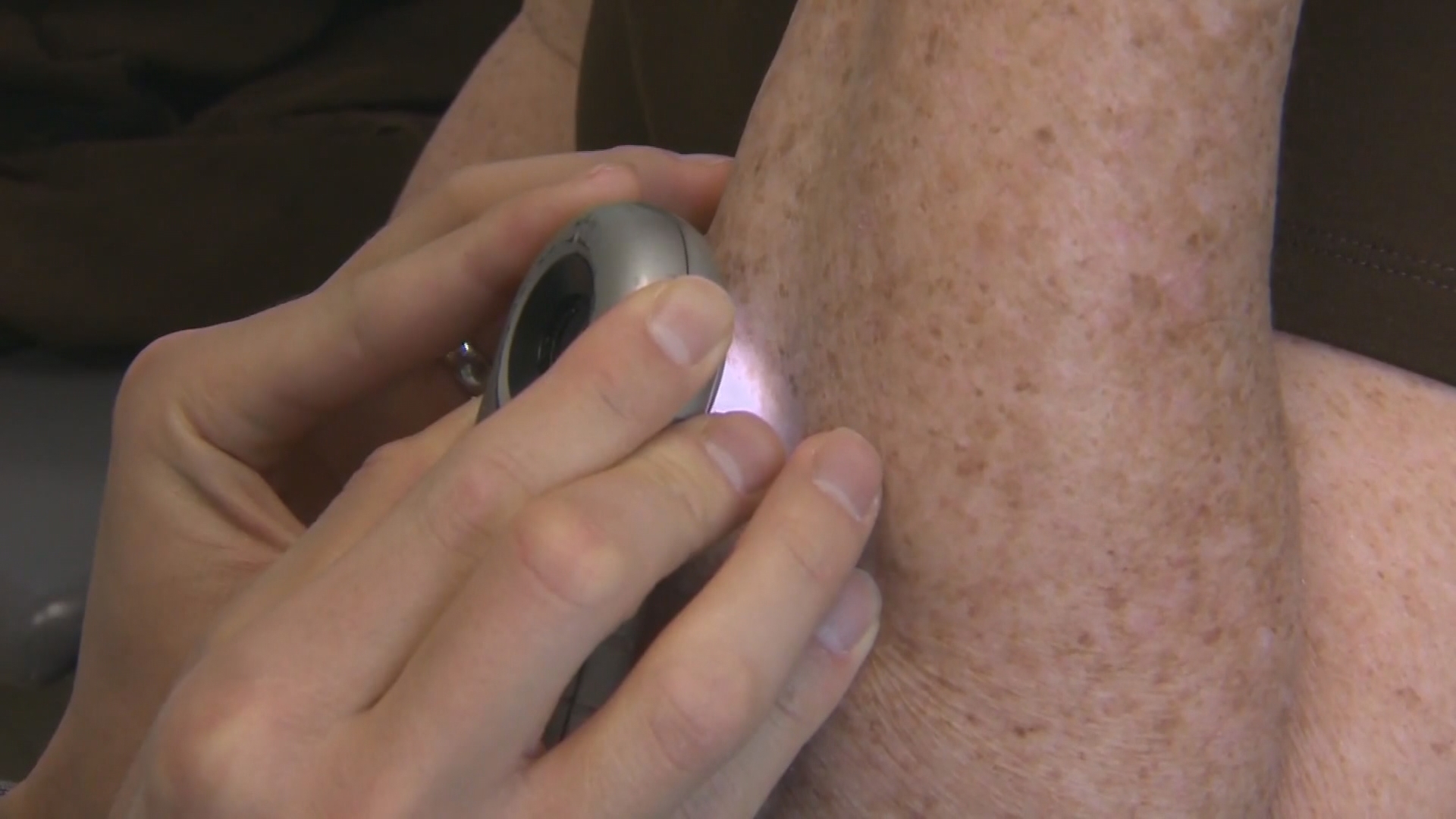MACON, Ga. — Dermatologists and oncologists say the best way to check if you have skin cancer is to get it checked early.
Michelle Windham is someone who urges everyone if they're going to be out in the sun, to protect their skin.
In January, while at the hair salon, Windham and her hair stylist noticed a red patch on her hairline.
"I gave it a few days and it just never really went back to being its normal color," Windham says.
After a month, Windham went to the doctor and had a biopsy done.
Within two weeks, Windham got the call about the biopsy. They told her she had basal cell carcinoma.
"I did not really think it was going to be skin cancer. I thought maybe I started was starting to have some eczema or something like that," Windham says.
Basal cell carcinoma is one of the most common and easily treated types of skin cancer with over 3.5 million cases per year.
The Mayo Clinic says, "basal cell carcinoma begins in the basal cells", which is "a type of cell within the skin that produces new skin cells as old ones die off." It can sometimes appear as a transparent bump on the skin.
Kimberly Lewis, the oncology manager with Piedmont Macon, says there are ways to lower your risk.
"Try to avoid when the sun at it's highest, the ray. Between 10 and four is the highest. If you can avoid the sun at those times, that's great. If not, please use sunscreen of 30 SPF and higher. You can use clothing that will help protect your skin, long sleeves, hats wide brims. Also, you make sure you get checked annually," Lewis says.
Lewis says the A-B-C-D-E skin cancer guide helps point out whether a mole or spot indicates melanoma or other skin cancers...
A - is for an asymmetrical shape-- meaning one half is unlike the other half... and not round or oval.
B - means the spot's border is notched or irregular.
C - means it has multiple colors... and even changes colors.
D - its diameter is larger than one-fourth of an inch or a pencil eraser.
E - it's constantly evolving... like shape... color... and height.
Sunburns increase your risk of developing skin cancer. To avoid sunburns, the American Academy of Dermatology recommends staying in the shade, wearing protective clothing and applying sunscreen frequently - once every two hours, and anytime you go swimming.
Windham says even though she takes care of her skin, she's learned to never ignore the small signs and wear sunscreen no matter your age or skin color. She said she did not follow some skin rules when she was younger.
"When I was younger teens, early 20s, I did not wear a lot of sunscreen. And so basal cell is caused by sun exposure," Windham said.
Lewis says anyone is at risk for skin cancer so "please protect your skin, make sure that you're always protecting your skin when you're out in the sun."
Skin cancer can look different from person to person. It can appear anywhere on the body and look pink, tan, brown, black, or blue. Some appear to look like a small skin tone or pink lesion.

